Many CGC collectors are engaged in an activity called “pressing”, which can greatly enhance the value of your comic books. Unless you own a perfect “10”, all comics have some degree of flaws. But, there are good flaws and bad flaws. Pressing is a process in which certain flaws can be literally squeezed out through the application of heat, moisture and pressure.
Pressing was very controversial about 10 years ago. Many purist collectors claim this is a form of restoration. But, the problem is that pressing is not detectible. Unlike traditional forms of restoration such as colour retouching, trimming or tear seals, the key differentiator with pressing is that nothing is added or removed during the “pressing” process. Collectors with a keen eye may suspect that a book may have been pressed but there really is no distinguishing evidence to differentiate a book that has been professionally “pressed” from a book that has been stored for many years under pressure in a tightly packed box. As such CGC does not consider “pressing” to be restoration and even purchased Matt Nelson’s “pressing” company, Classics Incorporated back in 2012 to augment their revenue stream.
Despite this, many people remain critical suggesting that “manufacturing” high grade books devalues the “real” high grade books. Case in point, back in 2011, the highest graded copy of Amazing Fantasy #15 broke a world record selling for $1.1 million dollars. At the time it was the only blue label copy graded at CGC 9.6. Shortly there after, CGC board members noted that another copy of an AF #15 graded 9.6 appeared on the census while a 9.4 copy had quietly been removed. It seemed pretty clear that the second 9.6 copy had been “manufactured”. Many collectors wondered how this would reflect on the value of the first 9.6 copy. Its impact still remains to be seen but I’m inclined to believe that this particular book, in this grade is still rare enough for the value to hold. As long as we don’t see a flood of AF#15’s appear there should be enough demand for this book to actually increase in value over time. Interestingly a third CGC 9.6 blue label has appeared on the census since then.
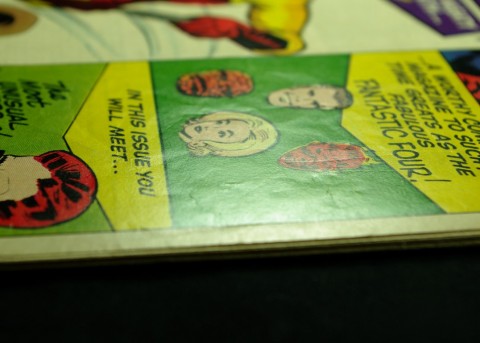
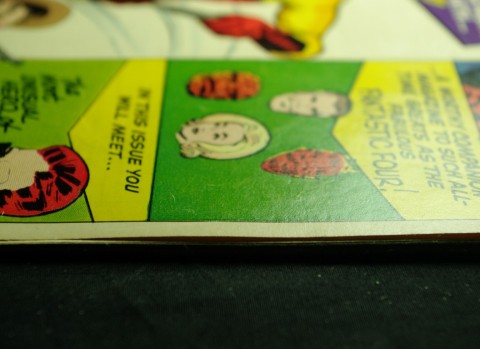
There are many well-trained book works professionals, including Tracey Heft of Eclipse Paper Conservation who has written several insightful write ups for us.
Matt Nelson who now works with CGC under the new banner Classics Collectible Services (CCS) is a well-known source for CGC collectors.
Joseph Grisolia, is or was the “go to” person amongst CGC board members for “pressing” due to his more economical price points. However, now that he’s teamed up with the newly formed CBCS, his relationship with CGC is unclear.
Susan Cicconi of the Restoration Lab is another great source.
I’m less familiar with Mike DeChellis of Hero Restoration but he is another option.
Stephen Solomon of American Comics and Collectibles also offers pressing service, although his business seems to be currently on hold.
The United States is the biggest comic book market so it makes sense that many related businesses would also be based in the US. However, with the Canadian Dollar fluctuating between $1.25 to $1.27 USD, I’ve had to rethink my comic related purchases. A 25% premium, on top of shipping charges and possible duty is a huge dent in our pockets. As such, I was delighted to discover a local pressing service.
Kevin Polidano is best known as the Comic Doctor within the convention circuit. In addition to being a collector himself, he offers a pressing and cleaning service at very competitive rates. But best of all, he’s local and you can find him set up at comic shows like the TCBS this coming February 22.
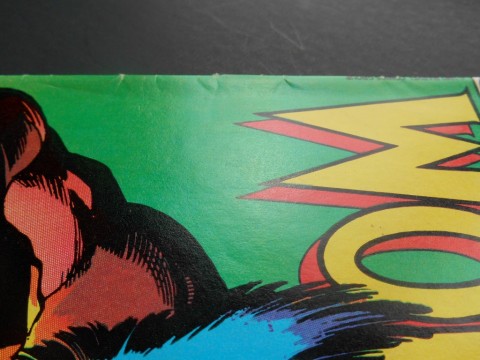
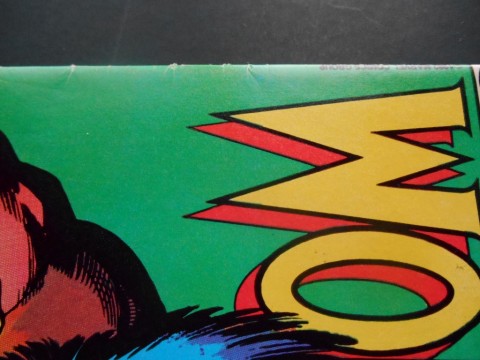
Whether you believe that pressing is a form of restoration or not, it has become a fabric of the collecting market. CGC board members have instilled an unwritten rule to disclose pressed books in the spirit of fair play and transparency. I fully support this voluntary action but of course there is no way to enforce this behaviour. As such, any large CGC collection will most likely contain some pressed books.
If you’re planning on selling your books and want to get the maximum value for your collection, you may want to give your books a good press. Not all flaws can be ironed out so be sure to consult with Kevin or any of the other experts before submitting your books. I’ve got a small pile of water soaked books myself which I’ve been meaning to have flattened out so I’ll be sure to let you know how it goes.
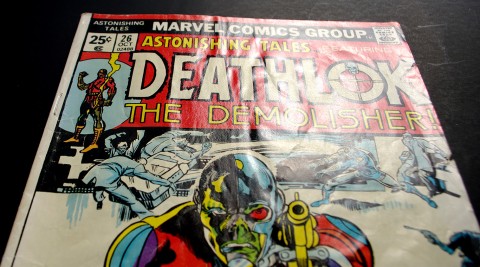
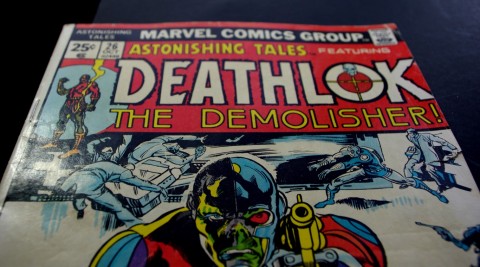


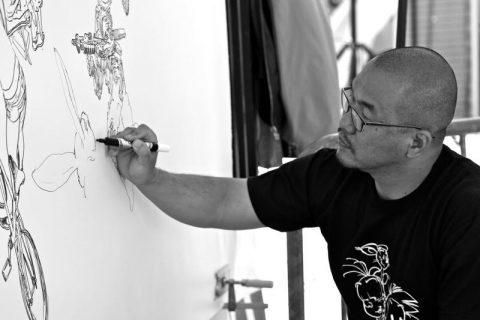
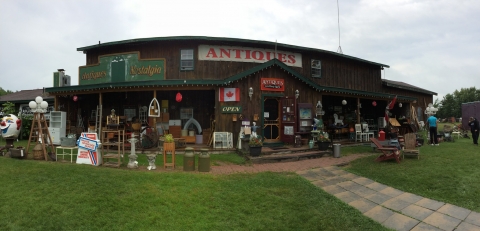
The difference on that Astonishing Tales copy is pretty amazing. Water damaged books tend to get crushed in CGC grading, or have in books I have observed. It’s about the only thing I think CGC goes a little overboard on in there grading, although a paper conservationist would probably disagree with me. I don’t think I would ever send in a book for grading with visible water damage. That said I own quite a few in my little reader comic collection. They are usually a bargain to purchase and I personally don’t take great offense to the defect.
It’s an interesting topic, I honestly thought you might see a little more chatter here as it can be a bit of a polarizing subject amongst collectors in terms of whether it is constitutes restoration or not. I am of mixed minds on the subject but tend to feel it is a form of restoration.
Great article and before & after photos. I did not know pressing made such a great improvement.
Pressing definitely was a hot topic many years back but from what I gather, most people seem to live with it these days. Even if they don’t agree with it, the horse has left the barn so there’s not much that can be done about it.
I feel the same as you. The difference between professional pressing versus a book that has been stored under pressure for many years is the deliberate “intent” to change a books character. The whole idea behind CGC is to aid in the resale of books, as is pressing so it’s difficult to know where to draw the line.
Thanks Ken. Many more case studies on pressers respective web sites. Check them out ^_^
Thank you for writing this article! I guess for me, the whole process is not about alchemy or adding/hiding anything to the original characteristics of the comic, so pressing is ok. Ironically, pressing does look like magic!
The downside of pressing at this stage is not qauntifiable. Your applying heat and pressure to a paper object and you could be shortening the life of the comic. I have met collectors who tend to only buy CGC books from the original style of CGC holders, which have a distinct style of typing on the notes, as they know these have less chance of being pressed as it all the rage now.
On the flipside who can blame someone taking a book from a 9.4 to a 9.6 in the case of AF15 but the real effect may take decades to emerge.
Indeed, flaws that don’t break ink tend to benefit the most from a good press. There’s a risk that a book can go down in grade, even after it has been pressed due to the subjective nature of grading… so if you decided to use this service, you’ll have to weigh the risk vs potential reward. People who do this often have developed an eye for recognizing good “press-ible” books and do quite well reselling their pressed books.
You bring up a great point David! Newsprint wasn’t designed to last and depending on how it’s been cared for, it has a shelf life of about 70 to 100 years before it starts to crumble. One of the biggest contributing factors to its deterioration is HEAT. However, when contacted, the companies that responded said that pressing would not damage your book and was perfectly safe. Unfortunately, they were not anymore detailed than that.
As well, some books get pressed multiple times as speculators tend to seek out certain books with specific flaws. Most services offer a pre-screening step in which they can tell you if a books has been “maxed” out. All these steps can add up in cost so it has to be worth while to jump through all these hoops.
This is why having Kevin on our side of the boarder is a nice treat (assuming you’re in Toronto). Not only in terms of reduced costs… but he’s very approachable and responsive. He suggests that the heat used is not hot enough for it to have any meaningful impact. I guess time will tell… except that these books will most likely out live me. However, what remains of my collection I’m taking to the grave.
^_^
Interesting topic Charlie. I wonder if CBCS will follow CGC’s lead and not crack down on pressing as well…
Also, are there any good resources for those who want to try “Do It Yourself” (DIY) pressing? I guess Youtube has instructional videos for the DIY types, but I would only try DIY for my lower dollar value comics, say a beaten up old issue of ROM from the 1980s.
I don’t have a problem at all with pressing. You do have to be realistic about what it can do. It won’t turn a mediocre book into high grade, it will not remove colour breaks and it will not add anything except an aesthetically nicer appearing book. Maybe incrementally raising , or lowering, the grade of the book. You pay your money and you take your chances. But you do that anyway when slabbing a book.
Considering that CBCS is partnered with Joey, I’d say they ARE following CGC’s lead. But I’m not clear how exclusive this arrangement is since Joey is still active on the CGC boards. He didn’t respond to any of my email regarding this question…
It’s funny you should ask me about DIY. A couple of years ago, I was looking into this myself. Not to start up a business or anything, but simply to have this capability set up in my basement for myself. You can buy presses cheap, for under $500 (older photo mount types are the best, adjustable pressure, even heat distribution, etc.). A couple of good pressings can pay off the press easily. Long story short, I decided against it because time is money and compared to my day job, it just wasn’t worth effort.
I was never able to find any one source that showed me how to press books but the information is out there. You just have to piece it together. Short of this, you can also approach Museums and book works specialist who can offer tips or advice. There are courses you can take on book making and paper conservation which would be worth while if you wanted to press books professionally but I wasn’t able to find any that directly dealt with comics specifically. Still, a book is a book and paper is paper so a book conservation course should suit just fine.
The other factor to consider is one of relationships. The sources I’ve listed have a deep and long association with the community. In other words, CGC and CBCS values their opinion. The high end comics community is actually quite small so they all know each other and are friends. Between Overstreet, the graders, the auction houses and conservationists… they all benefit from complimentary services (like any other community). I don’t have such relationships… but I suppose, over time I could build up my reputation and establish a network of my own but comics is just a hobby so I decided it was not worth while. Business is about money and money is better made in a growth market so comics for me remains a hobby.
Sorry for the long winded response ^_^
True that, Dennis. The examples posted on respective web links are the ones that demonstrate best in practice. No matter how hard you squeeze… a deep crease can not be “uncreased”. However, there are people who make a living from this practice. These guys are sharp. They know which books would benefit the most and are able to double their money by pressing out the right kind of flaws. It’s too speculative for me and prefer to work with the natural appreciation of books.
Awesome info! Thanks again for sharing your expertise on this topic.
Pressing a comic is very subjective. The luster can be degraded if the wrong pressing surface is used. I tried my hand at pressing using a clothes iron and copy paper and it had mixed results. The best use of pressing is for rolled seams. You can reestablish an original seam with little effort and remove curls close to the seam when your books weren’t stacked or stored properly. For books with water damage a high grade photo press is required. I tried to press several that were damaged in a basement flood but wrinkles and wavy pages just don’t respond well to a flat iron and steam only adds blemishes that can’t be pressed out.
My big question is how to get rid of the black spots that may or may not be dried mold. The flood happened 30 years ago and only now am I really cleaning them. Dried them as best I could and then stored them in a closet. Now, I trying to sell the collection but I’m finding black spots embedded in the paper. Any suggestions?
The master of pressing resides here: http://www.impressivecomicbooks.com/
5